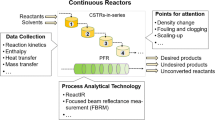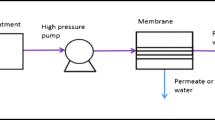Abstract
The theoretical basis of the nonregenerated recirculating dialysate system (RDS) was derived in Part I of this work [M. Prado, L. M. Roa, A. Palma, and J. A. Milán, Ann. Biomed. Eng. (2005)]. This system pursues the maximization of the clearance of hollow fiber dialyzers whose performance is controlled by diffusion, as occurred in standard hemodialysis. In this second part we perform a comparison by digital simulation of the RDS against three well-known two-chamber dialysis systems. As a major outcome, the efficiency of the RDS increased by a factor of five–eight with respect to the efficiency of a single dialyzer operating with a number of transfer units equal to 0.1, that is when the diffusive mass-transfer of the dialyzer is exhausted. Present low-flux dialyzers do not take advantage of the full potential of this technique, but the functional domain where high-flux and high-area dialyzers operate could be more suitable to exploit this technique. We conclude that RDS can be a competitive efficient technique for optimizing the dialysis efficiency.
Similar content being viewed by others
References
Agarwal, R., and R. E. Cronin. Heterogeneity in gentamicin clearance between high-efficiency hemodialyzers. Am. J. Kidney Dis. 23(1):47–51, 1994.
Allen, R., T. H. Frost, and N. A. Hoenich. The influence of the dialysate flow rate on hollow fiber hemodialyzer performance. Artif. Organs 19(11):1176–1180, 1995.
Brendolan, A., C. Ronco, C. Crepaldi, L. Bragantini, M. Milan, F. Gastaldon, and G. La Greca. Double pass dialysis: A new method of renal replacement in patients with malfunctioning vascular access. Int. J. Artif. Organs 17(7):379–384, 1994.
Charra, B., T. A. Depner, R. Vanholder, A. M. Dhondt, W. van Biesen, F. A. Gotch, and F. G. Casino. Is kt/v urea a satisfactory measure for dosing the newer dialysis regimens? Semin. Dial. 14(1):8–9, 2001.
Clark, W. R., R. J. Hamburger, and M. J. Lysaght. Effect of membrane composition and structure on solute removal and biocompatibility in hemodialysis. Kidney Int. 56(6):2005–2015, 1999.
Clark, W. R. Quantitative characterization of hemodialyzer solute and water transport. Semin. Dial. 14(1): 32–36, 2001.
Daugirdas, J. T., P. G. Blake, and T. S. Ing. Handbook of dialysis, 3ed. Philadelphia: Lippincot Williams & Wilkins, 2001.
de Francisco, A. L. Secondary hyperparathyroidism: Review of the disease and its treatment. Clin. Ther. 26(12):1976–1993, 2004.
Dennison, H. A. Improving adequacy of dialysis: Using in-series dialyzers. ANNA J. 26:610–612, 1999.
ERA-EDTA Registry: ERA-EDTA Registry 2002 Annual Report, Academic Medical Center, Amsterdam, The Netherlands, May 2004.
Friedman, M. H. Principles and Models of Biological Transport. Berlin: Springer-Verlag, 1986.
Fritz, B. A., S. Doss, L. M. McCann, and E. M. Wrone. A comparison of dual dialyzers in parallel and series to improve urea clearance in large hemodialysis patients. Am. J. Kidney Dis. 41(5):1008–1015, 2003.
Galach, M., A. Ciechanowska, S. Sabalinska, J. Waniewski, J. Wójcicki, and A. Werynski. Impact of convective transport on dialyzer clearance. J. Artif. Organs 6:42–48, 2003.
Gotch, F. A., J. A. Sargent, and M. L. Keen. Whither goest Kt/V? Kidney Int. 58(Suppl. 76):S3–S18, 2000.
Hauk, M., M. K. Kuhlmann, W. Riegel, and H. Kohler. In vivo effects of dialysate flow rate on Kt/V in maintenance hemodialysis patients. Am. J. Kidney Dis. 35(1):105–111, 2000.
Jaffrin, M. Y. Convective mass transfer in hemodialysis. Artif. Organs 19(11):1162–1171, 1995.
Ledebo, I. Principles and practice of hemofiltration and hemodiafiltration. Artif. Organs 22(1):20–25, 1998. [Gambro Group Renal Care, Lund, Sweden].
Leon, J. B., and A. R. Sehgal. Identifying patients at risk for hemodialysis underprescription. Am. J. Nephrol. 21(3):200–207, 2001.
Leypoldt, J. K., and A. K. Cheung. Effect of low dialysate flow rate on hemodialyzer mass transfer area coefficients for urea and creatinine. Home Hemodial. Int. 3:51–54, 1999.
Leypoldt, J. K., and A. K. Cheung. Increases in mass transfer-area coefficients and urea kt/v with increasing dialysate flow rate are greater for high-flux dialyzers. Am. J. Kidney Dis. 38(3):575–579, 2001.
Leypoldt, J. K., A. K. Cheung, L. Y. Agodoa, J. T. Daugirdas, T. Greene, and P. R. Keshaviah. Hemodialyzer mass transfer-area coefficients for urea increase at high dialysate flow rates. The hemodialysis (hemo) study. Kidney Int. 51(6):2013–2017, 1997.
Leypoldt, J. K., A. K. Cheung, and R. B. Deeter. Effect of hemodialyzer reuse: Dissociation between clearances of small and large solutes. Am. J. Kidney Dis. 32(2):295–301, 1998.
Lowrie, E. G. The normalized treatment ratio (kt/v) is not the best dialysis dose parameter. Blood Purif. 18(4):286–294, 2000.
Michaels, A. S. Operating parameters and performance criteria for hemodialyzers and other membrane-separation devices. Trans. Am. Soc. Artif. Int. Organs 12:387–392, 1966.
Morti, S. M., and A. L. Zydney. Protein–membrane interactions during hemodialysis: Effects on solute transport. Asaio J. 44(4):319–326, 1998.
Ouseph, R., and R. A. Ward. Increasing dialysate flow rate increases dialyzer urea mass transfer-area coefficients during clinical use. Am. J. Kidney Dis. 37(2):316–320, 2001.
Powers, K. M., M. J. Wilkowski, A. W. Helmandollar, K. G. Koenig, and W. K. Bolton. Improved urea reduction ratio and Kt/V in large hemodialysis patients using two dialyzers in parallel. Am. J. Kidney Dis. 35(2):266–274, 2000.
Prado, M., L. M. Roa, A. Palma, and J. A. Milán. Improving hollow fiber dialyzer efficiency with a recirculating dialysate system I: Theory and applicability. Ann. Biomed. Eng. 33(5):643–656, 2005.
Roa, L. M., and M. Prado. The role of urea kinetic modeling in assessing the adequacy of dialysis. Crit. Rev. Biomed. Eng. 32(5–6):461–539, 2004.
Roa, L., and M. Prado. Simulation languages (in press), in Wiley Encyclopedia of Biomedical Engineering, edited by Metin Akay, John Wiley and Sons, Inc., 2005.
Ronco, C., M. Feriani, A. Brendolan, S. Chiaramonte, M. Milan, R. Dell Aquila, M. Scabardi, L. Bragantini, P. Conz, and G. La Greca. Paired filtration dialysis: Studies on efficiency, flow dynamics, and hydraulic properties of the system. Blood Purif. 8(3):126–140, 1990.
Ronco, C., G. Orlandini, A. Brendolan, A. Lupi, and G. La Greca. Enhancement of convective transport by internal filtration in a modified experimental hemodialyzer: Technical note. Kidney Int. 54(3):979–985, 1998.
Scott, M. K., B. A. Mueller, and W. R. Clark. Vancomycin mass transfer characteristics of high-flux cellulosic dialysers. Nephrol. Dial. Transplant. 12(12):2647–2653, 1997.
Splendiani, G., D. Zazzaro, T. Tullio, R. Colombo, M. Beciani, and A. Violante. Bidialysis: A new technique. Int. J. Artif. Organs 24(2):70–78, 2001.
Sridhar, N. R., K. Ferrand, D. Reger, P. Hayes, L. Pinnavaia, D. Butts, R. Kohli, and G. Papandenatos. Urea kinetics with dialyzer reuse—a prospective study. Am. J. Nephrol. 19(6):668–673, 1999.
Teruel, J. L., M. Fernández Lucas, J. R. Rodríguez, J. López Sánchez, R. Marcén, M. Rivera, and F. Liañoy J. Ortuño. Relación entre la dialisancia iónica y el aclaramiento de urea. Nefrología 20(2), 2000.
U.S. Renal Data System, USRDS, Annual data report: Atlas of end-stage renal disease in the United States. National Institute of Health, National Institute of Diabetes and Digestive and Kidney Diseases, Bethesda, MD 2003.
Waniewski, J., P. Lucjanek, and A. Werynski. Alternative descriptions of combined diffusive and convective mass transport in hemodialyzer. Artif. Organs 17(1): 3–7, 1993.
Waniewski, J., A. Werynski, P. Ahrenholz, P. Lucjanek, W. Judycki, and G. Esther. Theoretical basis and experimental verification of the impact of ultrafiltration on dialyzer clearance. Artif. Organs 15(2):70–77, 1991.
Ward, R. A. Blood flow rate: An important determinant of urea clearance and delivered Kt/V. Adv. Ren. Replace. Ther. 6(1):75–79, 1999.
Werynski, A., and J. Waniewski. Theoretical description of mass transport in medical membrane devices. Artif. Organs 19(5):420–427, 1995.
Author information
Authors and Affiliations
Corresponding author
Rights and permissions
About this article
Cite this article
Prado, M., Roa, L.M., Palma, A. et al. Improving Hollow Fiber Dialyzer Efficiency with a Recirculating Dialysate System II: Comparison Against Two-Chamber Dialysis Systems. Ann Biomed Eng 33, 1595–1606 (2005). https://doi.org/10.1007/s10439-005-6884-3
Received:
Accepted:
Issue Date:
DOI: https://doi.org/10.1007/s10439-005-6884-3




